https://urbannext.net/buga-fiber-pavilion/
| BUGA Fiber Pavilion: Glimpse of Future Construction https://urbannext.net/buga-fiber-pavilion/ |
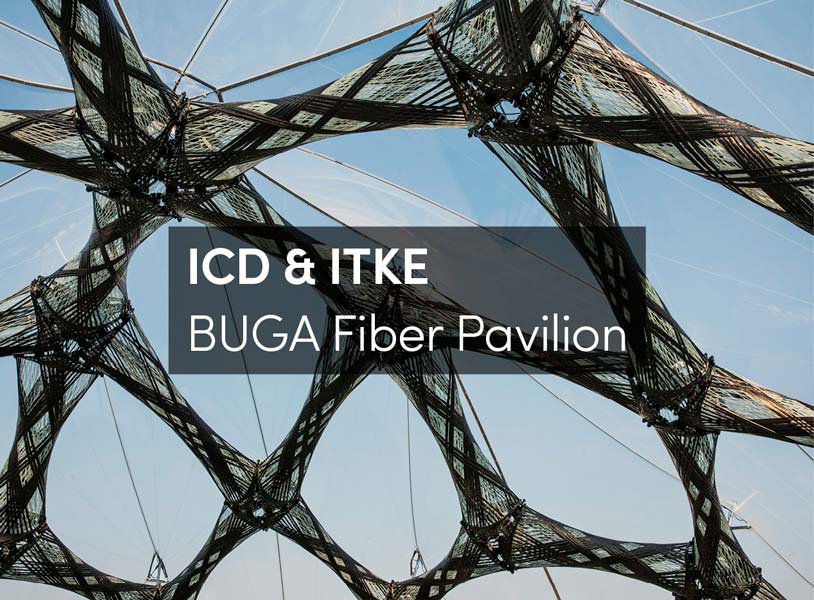
Categories: Designing Matter, ICD, ITKE, Low Density, Project, Technology and fabrication
Embedded in the wavelike landscape of the Bundesgartenschau grounds, the BUGA Fiber Pavilion offers visitors an astounding architectural experience and a glimpse of future construction. It builds on many years of biomimetic research in architecture at the Institute for Computational Design and Construction (ICD) and the Institute for Building Structures and Structural Design (ITKE) at the University of Stuttgart.
The pavilion demonstrates how combining cutting-edge computational technologies with construction principles found in nature enables the development of a truly novel and genuinely digital building system. The pavilion’s load-bearing structure is robotically produced from advanced fiber composites only. This globally unique structure is not only highly effective and exceptionally lightweight, but it also provides a distinctive yet authentic architectural expression and an extraordinary spatial experience.
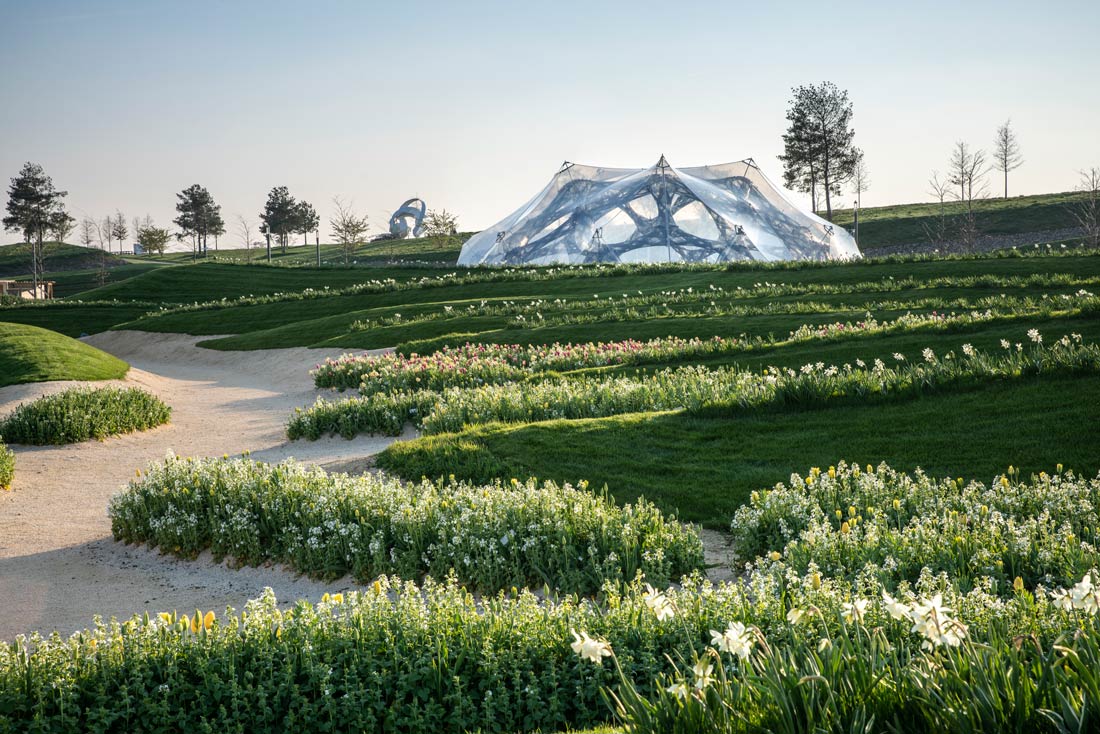
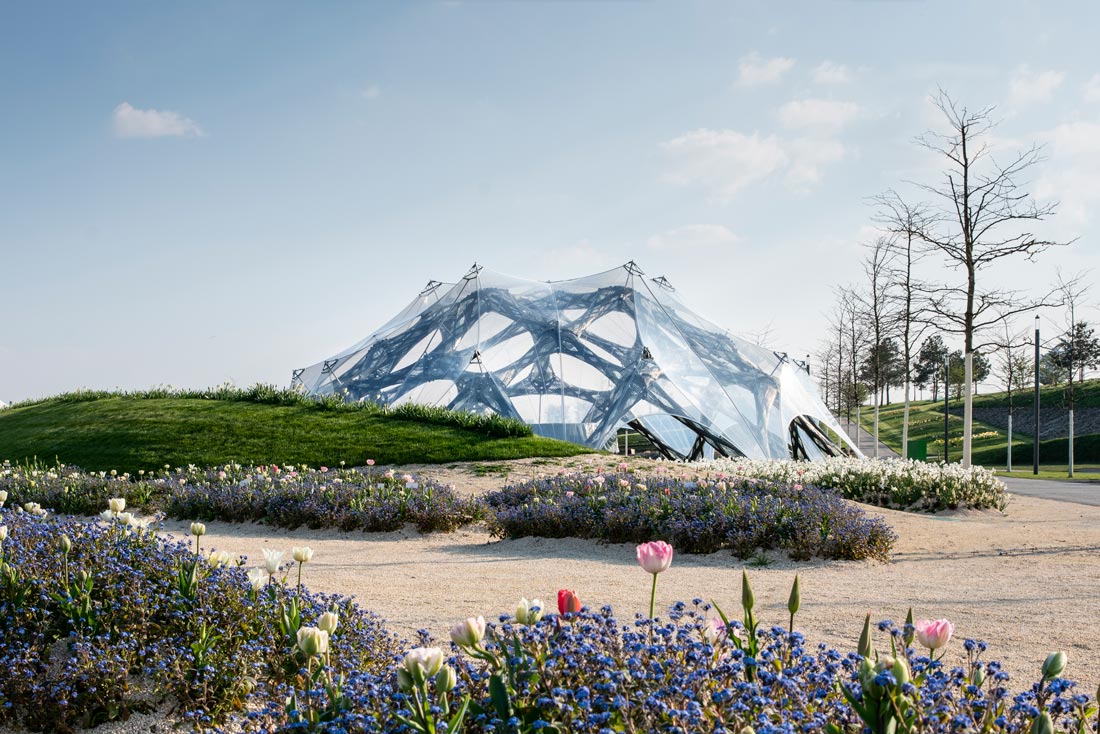
In biology, most load-bearing structures are fiber composites. They are made from fibers – for example cellulose, chitin or collagen – and a matrix material that supports them and maintains their relative position. The astounding performance and unrivalled resource efficiency of biological structures stems from these fibrous systems. Their organization, directionality and density are finely tuned and locally varied in order to ensure that material is only placed where it is needed.
The BUGA Fiber Pavilion aims to transfer this biological principle of load-adapted, and thus highly differentiated, fiber composite systems into architecture. Manmade composites, such as the glass- or carbon-fiber-reinforced plastics that were used for this building, are ideally suited for such an approach, because they share their fundamental characteristics with natural composites.
The project builds on many years of biomimetic research at the Institute for Computational Design and Construction (ICD) and the Institute for Building Structures and Structural Design (ITKE). It shows how an interdisciplinary exploration of biological principles, together with the latest computational technologies, can lead to a truly novel and genuinely digital fiber composite building system. Only a few years ago, this pavilion would have been impossible to design or build.
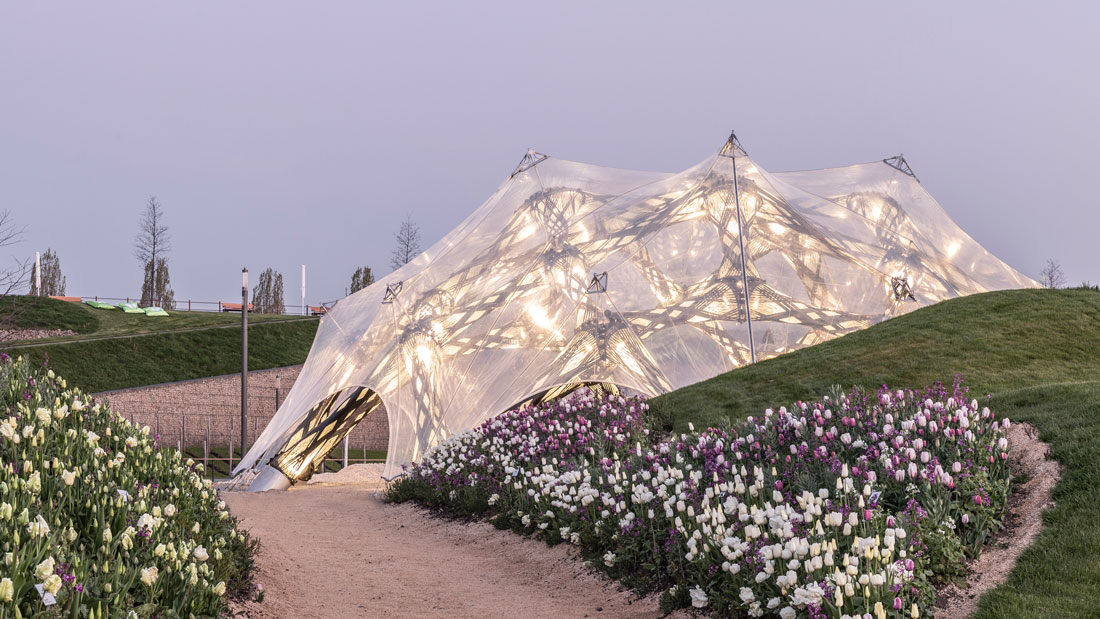
The pavilion is made from more than 150,000 meters of spatially arranged glass- and carbon fibers. They all need to be individually designed and placed, which is very hard to achieve with a typical linear workflow and established production technologies. Thus, it requires a novel co-design approach, where architectural design, structural engineering and robotic fabrication are developed in continuous computational feedback. In this way, the fiber arrangement, density and orientation of each building component can be individually calibrated, structurally tuned and architecturally articulated, while remaining directly producible.
The building components are produced by robotic coreless filament winding, a novel additive manufacturing approach pioneered and developed at the University of Stuttgart. Fibrous filaments are freely placed between two rotating winding scaffolds by a robot. During this process, the predefined shape of the building component emerges only from the interaction of the filaments, eliminating the need for any mold or core. This allows for bespoke form and an individual fiber layup for each component, without any economic disadvantage. In addition, there is no production waste or material off-cuts. During manufacturing, a lattice of translucent glass fibers is generated, onto which the black carbon fibers are placed where they are structural needed. This results in highly load-adapted components with a highly distinct architectural appearance.
Full production took place at the project’s industrial partner FibR GmbH. Each component takes between four to six hours to make from around 1,000 meters of glass fiber and 1,600 meters of carbon fiber on average.
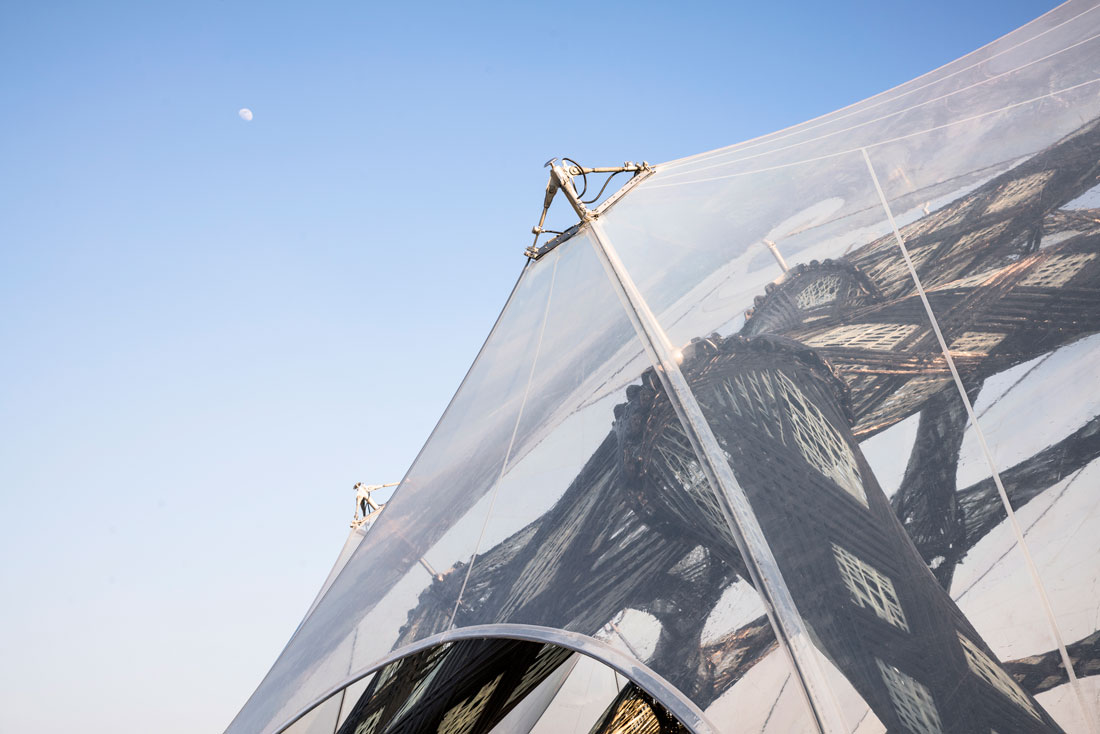
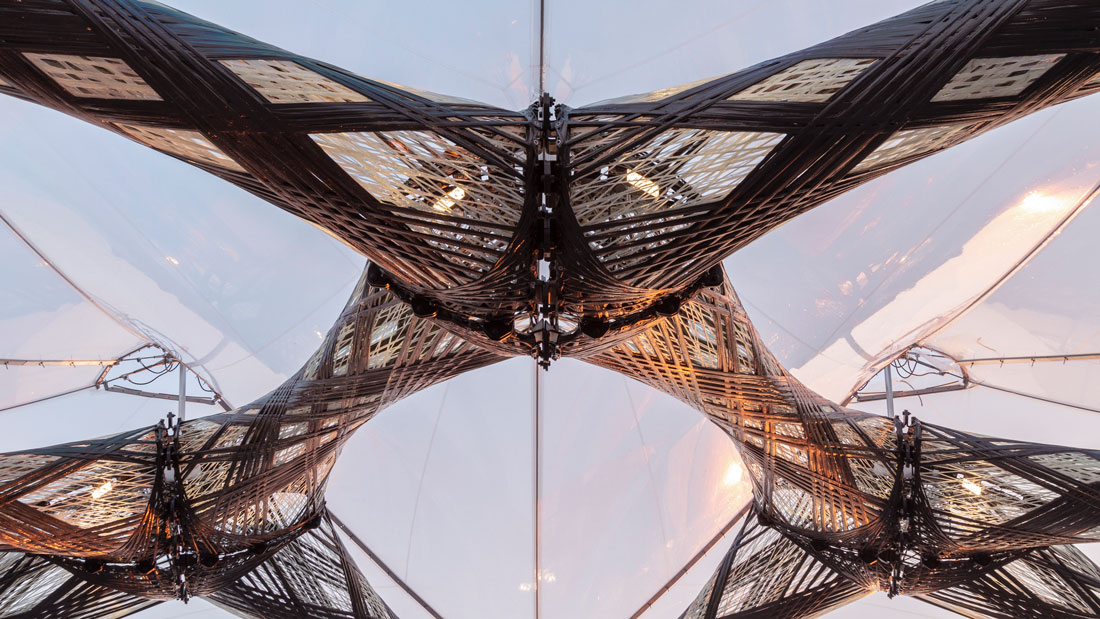
The pavilion covers a floor area of around 400 square meters and achieves a free span of more than 23 meters. It is enclosed by fully transparent, mechanically pre-stressed ETFE membrane. The primary load-bearing structure is made from 60 bespoke fiber composite components only. With 7.6 kilograms per square meter it is exceptionally lightweight, approximately five times lighter than a more conventional steel structure. Elaborate testing procedures required for full approval showed that a single fibrous component can take up to 250 kilo newton of compression force, which equals around 25 tons, or the weight of more than 15 cars. The pavilion shows how a truly integrative approach to computational design and robotic fabrication enables the development of novel, truly digital fiber composite building systems that are fully compliant with the stringent German building regulations, exceptionally light, structurally efficient and architecturally expressive.

 The pavilion translates innovation on a technical level into a unique architectural experience. The black carbon filament bundles, wrapping around the translucent glass fiber lattice like flexed muscles, create a stark contrast in texture that is highlighted by the pavilion’s fully transparent skin. This distinctive architectural articulation is further intensified by the gradient from sparser carbon filaments at the top towards their denser application on the slenderest components that meet the ground. While most visitors may not have seen anything like it before, the pavilion exposes its underlying design principles in an explicable yet expressive way. Its unfamiliar yet authentic architectural articulation evokes new ways of digital making, which no longer remain a futuristic proposition but have already become a tangible reality.
The pavilion translates innovation on a technical level into a unique architectural experience. The black carbon filament bundles, wrapping around the translucent glass fiber lattice like flexed muscles, create a stark contrast in texture that is highlighted by the pavilion’s fully transparent skin. This distinctive architectural articulation is further intensified by the gradient from sparser carbon filaments at the top towards their denser application on the slenderest components that meet the ground. While most visitors may not have seen anything like it before, the pavilion exposes its underlying design principles in an explicable yet expressive way. Its unfamiliar yet authentic architectural articulation evokes new ways of digital making, which no longer remain a futuristic proposition but have already become a tangible reality.
| ISSN : 2575-5374 |